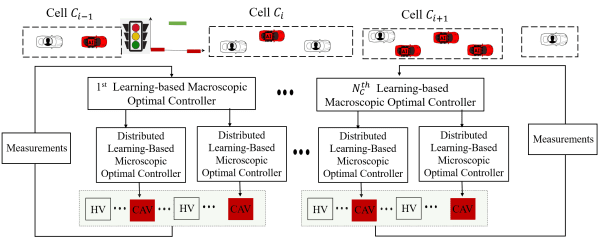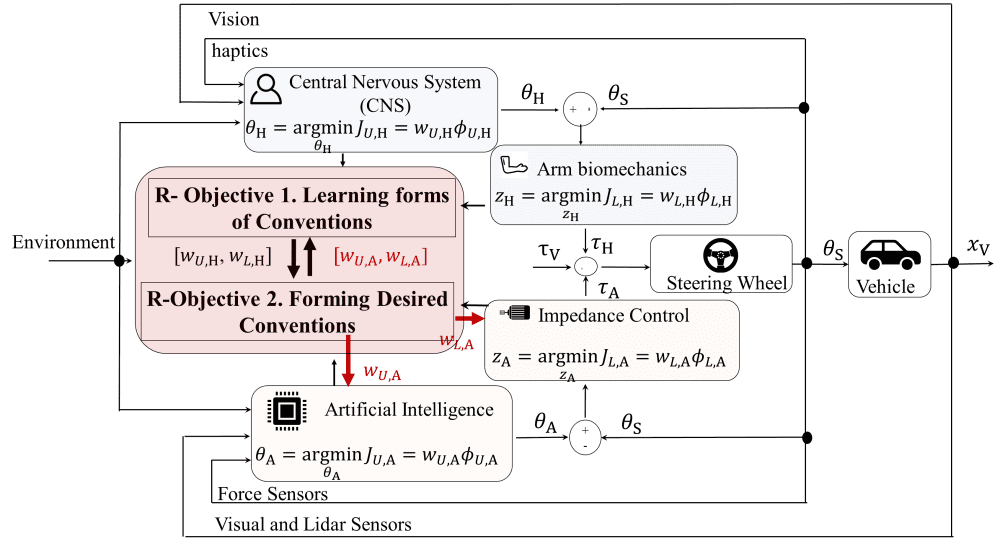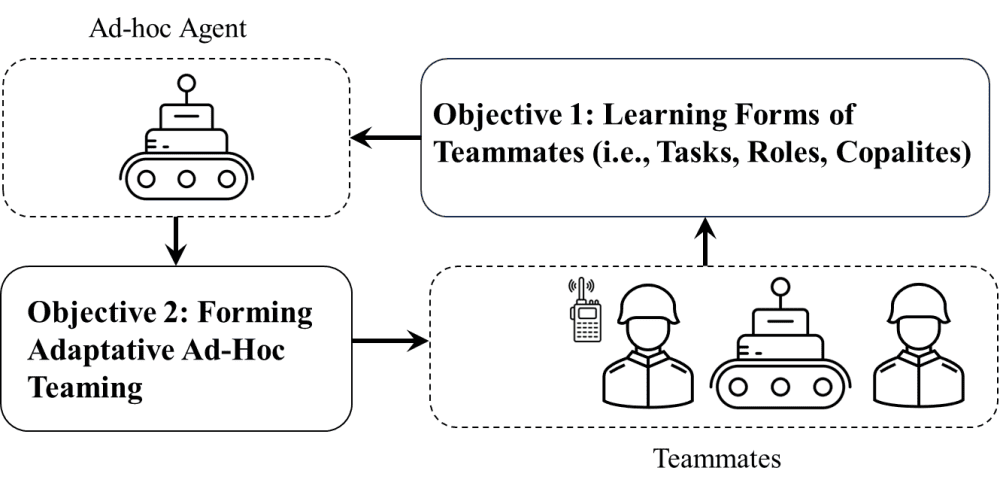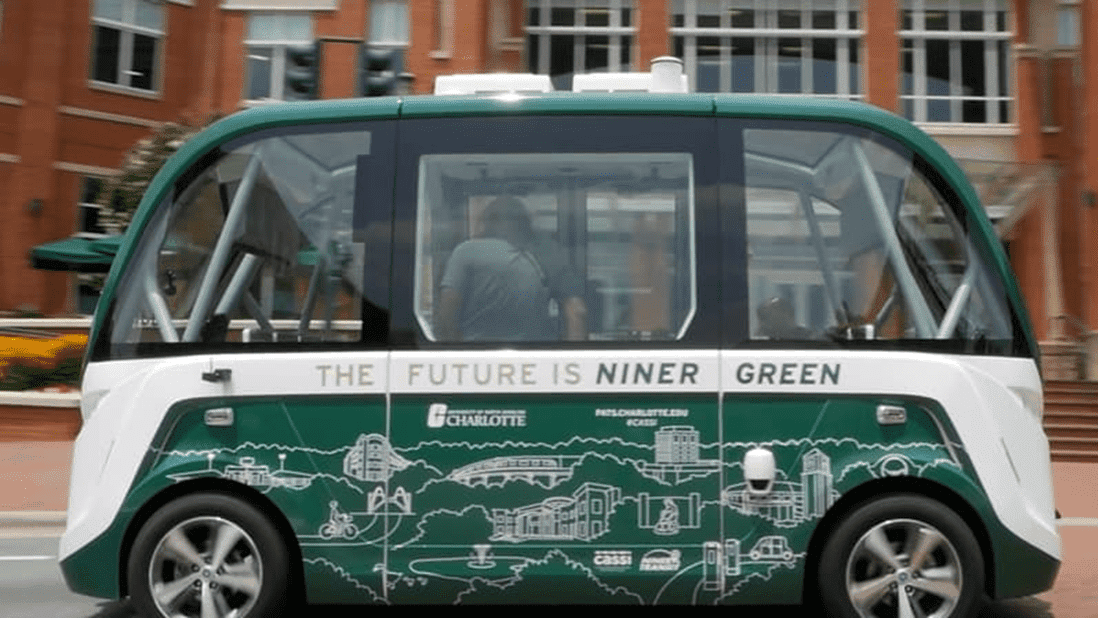Research
Active Projects
Control of Heterogeneous Traffic Systems.

Project Deatials
The two goals of the project are
- Development of Distributed Learning-Based Predictive Control Algorithms at the Macroscopic Level: To improve the aggregated behavior of a heterogeneous traffic network, we are developing distributed learning- and scenario-based model predictive control (DLB-sMPC) methods wherein functional variational Bayesian neural networks (BNNs) is used to model state- and input-dependent uncertainty online. Moreover, to enhance the computational efficiencies of the proposed DLB-sMPC, we are developing a set of distributed optimization algorithms using the distributed Alternating Direction Method of Multipliers and Primal Decomposition approaches.
- Development of Distributed Cautious Model Predictive Control-Based Algorithms at Microscopic Level: At the lower level, to balance between the closed-loop performance and safety (collision avoidance) on the road, we are developing distributed cautious model predictive control (MPC) based approaches for heterogeneous multi-agent systems. The controller aims to ensure safety and improve the tracking of the desired reference (set by the macroscopic-level controller) for the heterogeneous multi-agent system in the presence of modeling uncertainty and reactive obstacles. The effectiveness of the proposed learning-based scalable predictive control framework will be validated on an integrated model of a heterogeneous traffic network for both urban and highway scenarios using PTV-VISSIM software.
Learning and Leveraging Human-Robot Co-Adaptation Policies for Resolving a Conflict.
Project Details
Developing Ad-Hoc Teamwork Strategies for Human-Robot Collaboration.
Project Details
Past Projects
Automated Shuttle Pilot at UNC Charlotte
The rapid advancement in driverless technology has led to the deployment of automated shuttles. This project evaluated an automated shuttle pilot conducted on the University of North Carolina at Charlotte campus from June to December 2023. The primary objectives of this project is here
Project Details
The goals of the project are


